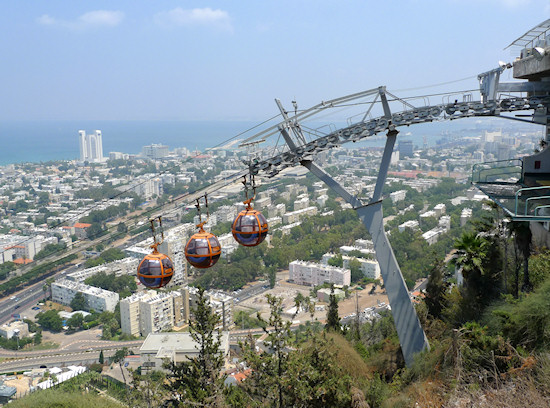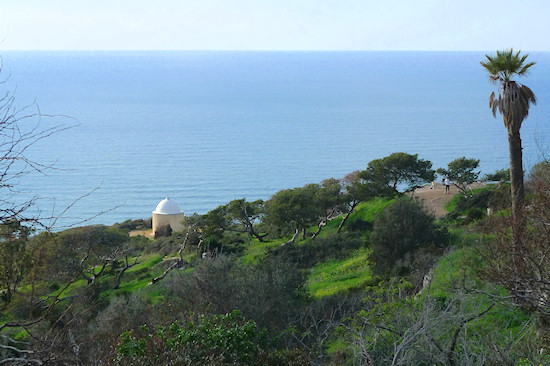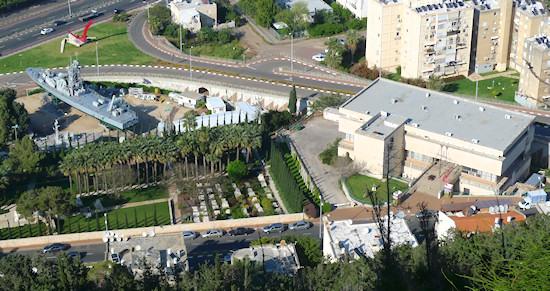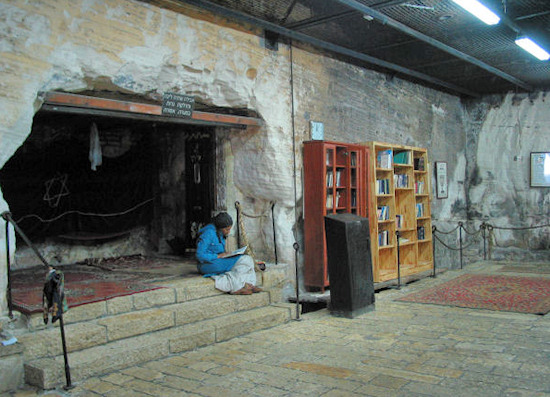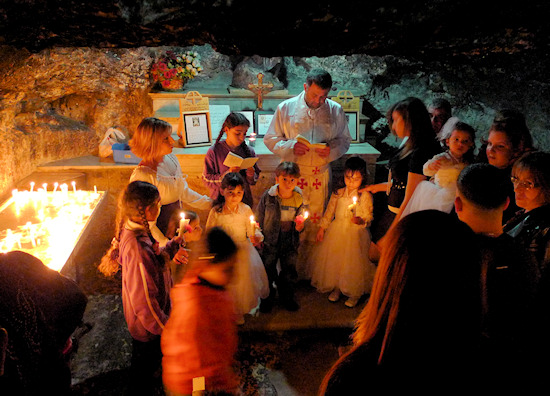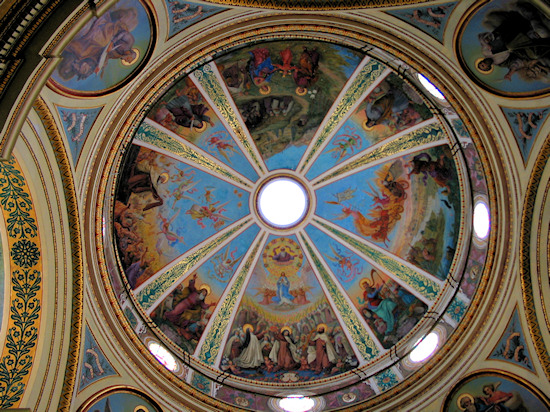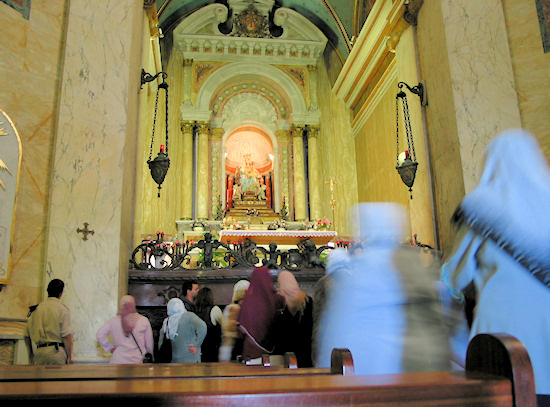Section 18: Carmel Headland and Stella Maris | 1.5 Km
Starting point: Hubert Humphry St., Cable Car Station, Bat Galim | 5m above sea level
Ending point: Stella Maris Rd., Upper Cable Car Station | 140m above sea level
This section leads to one of Haifa’s most beautiful view points, and includes an enriching cultural experience that demonstrates the sanctity of the Carmel for different religions.
From the lower cable car station climb the steps to the upper part of the Allenby interchange and continue slightly further up Allenby Rd. On the left are two interesting museums relating to the sea and on the right, on the slope of the Carmel, is Elijah’s Cave.
Begin with the museums. The “Clandestine Immigration and Naval Museum” is visible from afar due to the boats “parked” in its yard and its most impressive exhibit, the monument to the “Dakar” submarine victims. The immigration ship “Af Al Pi Chen” (which may be translated as “in spite of everything”) is used as a space to exhibit clandestine immigration to Israel.
The “Haifa Maritime Museum” is an experience for all those who love the sea. Among its displays are models of ancient sailing vessels and archaeological finds relating to the lives of humans in a marine environment.
Return to Allenby Rd. and cross over onto the Carmel slope. Climb up to Elijah’s Cave using the signs as a guide. The prophet Elijah is considered an esteemed prophet for all adherents of the monotheistic religions and the biblical descriptions of his activities in the Carmel have imbued an aura of sanctity to the entire mountainous ridge. Elijah’s Cave is particularly ancient and inscriptions dating to the 5th and 6th centuries have been discovered there. Some believe that the prophet Elijah himself hid in the cave. Whatever the truth, like all sacred places, the site acts as a magnet for those seeking blessings.
From a small square adjacent to the entrance to the cave, continue up the ridge on a dirt track that becomes a path that climbs slowly up and arrives eventually at Stella Maris. There are other interesting sites on the way to Stella Maris: Notice a water cistern carved into the exposed rocky slope. Later, notice two square concrete structures that were part of a fortifications system constructed by the British who feared attack by the German-Italian axis.
Further up the slope is the crowning glory of this part of the trail: a solitary chapel situated in a dramatic location facing the sea and reminiscent of a picturesque view of Greece. The sealed chapel belongs to the Carmelite monastery of Stella Maris. In winter and spring the slope is covered in beautiful flowers including the stunning yellow Asphodeline lutea (king’s spear).
The hiker is aiming for the magnificent structure standing at the crest of the mountain at the top of which is a lighthouse and antennae. The building was originally the summer palace of the Governor of Acre, Abdullah Pasha and had many owners before its current owner, the navy, hence the antennae. The lighthouse was added to the structure during the Carmelite period and was given another name – “Stella Maris” (Kochav HaYam).
The path leads us, to the right (west) of the building, to Stella Maris Rd. Opposite the entrance to the palace, notice the statue of the Virgin Mary.
The main site here is the large Carmelite monastery, Stella Maris. The Carmelites are an ancient order on the Carmel. In Section 13 the trail leads through Nahal Siah where the ruins of their first settlement may be seen. That settlement concluded in the 13th century and the Carmelites returned to the Carmel, this time to its headland, in the 17th century. The construction of the monastery on the ridge began in the 18th century during the period of the Governor Daher El-Omar, with French assistance. Indeed, the area is still known as the “French Carmel”. The contemporary version of the monastery was constructed in the 19th century when it was an important center that included a luxurious hotel and a hospital. Today, the impressive church is open to visitors.
Just before leaving Rosh HaCarmel, head towards the top of the upper cable car station to take in a wonderful view of northern Israel. Below is the Shikmona coastline and Bat Galim visited in the previous sections of the trail.
English translation by Roberta Neiger sponsored by the social hub for community & housing, Faculty of Architecture and Town Planning, The Technion
